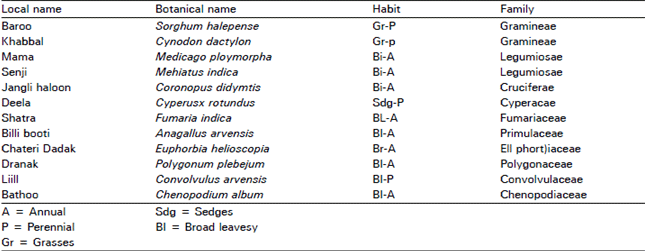Research Article
Evaluation of Pre-emergence Herbicides and their Application Methods for Weed Control in Soybean
Oilseed Research Programme, NARC, Islamabad-45500, Pakistan
Sher Mahmood Shah
Oilseed Research Programme, NARC, Islamabad-45500, Pakistan
M. Yasin Mirza
Oilseed Research Programme, NARC, Islamabad-45500, Pakistan











